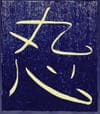While I was listening to a podcast by Katy Bowman recently, my attention was especially caught by her discussion of the semantics of fitness. She observed the tendency to think of both movement and the fitness of our body in terms that focus on a hunting theme—on pursuit and battle. We favor intensity, pushing heart rates up, running as fast as we can to break our previous best, and in general straining towards our physiological breaking points to improve.
Important? Of course. Possessing the necessary the ability to sprint or express strength explosively can be a matter of life or death. So too can the capacity to move continuously for hours at the edges of your physical ability, carry considerable loads for distance, or move heavy objects be enormously useful in the right circumstances. However, our ancestors were not running all-out for their lives or their dinner literally every time they moved. That narrow focus has led to undervaluing other ways of moving.
For an example, as Katy points out, there's little emphasis on movements that resemble our ancestral methods of gathering and foraging. Would you consider going out to the forest to pick berries and small plants—balancing and picking your way over rocks and roots, scanning your surroundings, stooping, squatting, and using your hands in finely dexterous ways—to be improving your fitness or movement? Probably not. You'd be going out for fun, to explore, or to gather nourishment. While I'd say that's a better way to look at it anyway, it's also helpful to recognize that this slower, often longer duration, movement is as valuable to us and to our health as the intense stuff is. It's a different sort of training: one that requires and develops attentiveness, precision and sustained effort.
The intensity within the hunt encompasses only a fraction of the total time our ancestors spent moving. I believe we need to recognize and value these other, often less eye-catching or (apparently) physically strenuous, modes of moving. They're just as important for a healthy movement practice and active life.
